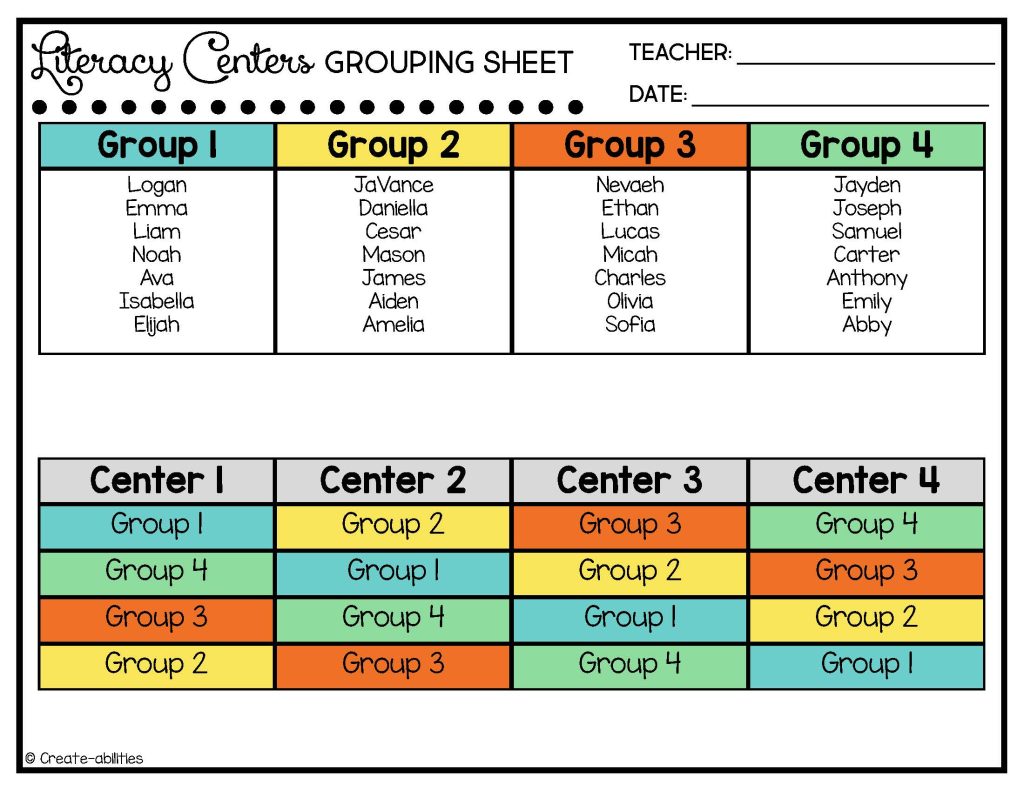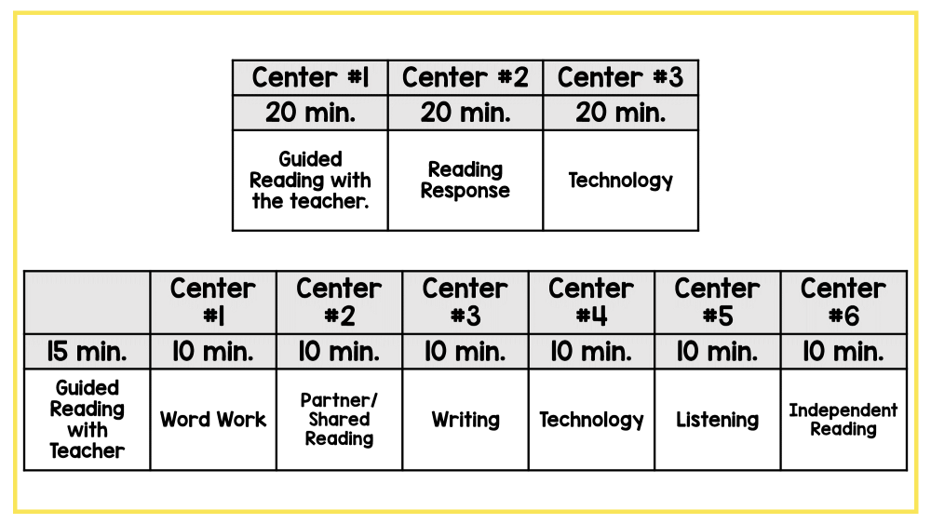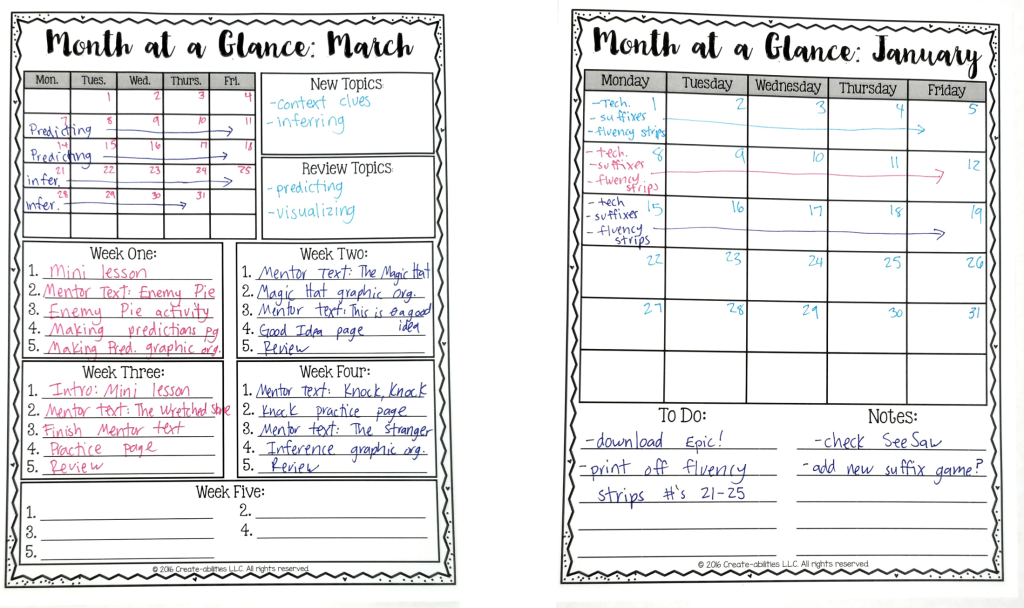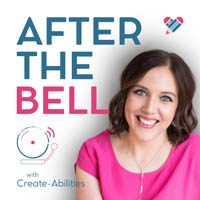
3 Steps for Starting Differentiated Literacy Centers
“Teachers find that learning and literacy centers enable them to cover more content and skill development in the same amount of class time. Plus, it’s easy to give individual attention and personalized instruction to students who need it.” -Dr. Katherine McKnight
Like most teachers, I learned all about literacy centers throughout my undergrad and graduate programs. I was excited to use them in my classroom. After all, the research proves how these engaging activities can increase student motivation, independence, and achievement. I was sold, and actually wondered why on Earth there would be teachers NOT using literacy centers in their classrooms!
After college I got my first job. I wanted to make sure I was getting the most out of my center time so I decided to create many (about 10) centers designed to last about 5 or 6 minutes each. My goal was to pack as much in as I could each day. I spent hours creating fun and engaging activities that supported our reading curriculum. Every morning I quickly scattered them around my room and gave fast instructions for each one. Then I plopped some kids at each center and set them lose to complete these activities while I met with Guided Reading groups. What could go wrong?
It turns out a lot could (and did) go wrong. There were kids constantly interrupting to ask questions about what they were doing, the pieces for each center were always getting misplaced, and I really had no plan to track all the work they were completing. I knew enough to know that my literacy centers were not effective, but I wasn’t really sure how to adjust them so that they were. I realized that despite all the research I had read about WHY to use literacy centers, I had read virtually nothing on HOW to implement and manage them.
So now, let’s take some time to focus on the HOW of literacy centers, and to hopefully help you prevent some of the chaos I had when I first implemented them in my classroom. This is a framework to get you started, or to fine tune the centers you already have in place. It is important to note that literacy centers will look different in everyone’s classroom, and that these tips are intended to help you figure out the method that works best for you and your students!
Create a Vision for Your Room
Start by deciding what literacy centers will look like in your classroom. Again, it is important to create a plan that works best for your teaching style, your students, your schedule, and your classroom. You may need to adjust your approach each year, or even throughout the year based on the needs of those specific students.
- Create a Schedule.
Looking back, this was my biggest mistake at first. I should have designed a schedule that met the needs of my students and also supported my objective. Instead, I was just trying to fit as much into each day as possible. This was too much for both my students and myself.
Since then I have created a fairly straightforward schedule. Having this structure and routine has been a game changer for me. This may not be the ideal schedule for everyone, but it is for my classroom. When trying to establish a literacy center schedule that works for your classroom, there are three questions to keep in mind.
- How much time can I devote to centers? Literacy centers should really be used during your guided reading time. I am fortunate enough to have a daily 90 minute ELA block, and I use an hour of that time for guided reading. Therefore, I have 60 minutes every day to devote to centers.
This time frame works well for me, but is not the only way to make centers work. If you cannot dedicate daily time to literacy centers, that is ok! Work within your constraints. Some years I have only used them Monday through Thursday due to testing on Fridays. Many teachers fit them in 2 or 3 days a week, and it is not unheard of to have just one day a week devoted to literacy centers. Don’t let an irregular schedule stand in the way of implementing literacy centers. Simply start with what you can do, and make that work!
- How long should each center be? Obviously, the answer to this will be based largely on your answer to the previous question. I like to keep things simple, so I have made each center last 15 minutes. This is the length of my guided reading lessons, so everyone is rotating at the same time. Through trial and error, I have learned this works best for me.
You should also consider the age and attention spans of your students when figuring out how long each center will be. Younger students may need more frequent rotations to keep them engaged (10-15 minutes), while older students may be able to handle 20 minutes at a center.
- How many groups should I have? There is no single correct answer to this question. Larger groups will give you to have less centers to plan and manage, but can lead to more behavior problems. Smaller groups are great from a behavior management standpoint, but require more centers. You will need to look at your class dynamics, your physical space, and your timeframe to decide what number of groups works best for you.
After considering each of those questions, you can design the schedule that works best for your class.
You do not have to agonize over the perfect schedule before you start. Remember, you can always adjust your schedule once you’ve started. The important thing is to get started, and then make changes as needed.
2. Map it Out.
Once you’ve created a schedule, it’s time to start planning your content. This sounds daunting, but really doesn’t have to be. I am a visual person, so I like using these forms to track my objectives and my students’ needs.
By mapping out your mini lesson topics and your mentor texts, you can easily select centers that support your objectives. You can also be more efficient, as you can determine which materials you need to gather for a week (or a month, if you’re super organized) at a time with a quick glance. This is really a good tool for all areas of teaching, but has proven indispensable in planning literacy centers.
3. Determine Your Routines.
We all know that most of our kids thrive with routine. (Honestly, a lot of adults do as well!) Since we are asking our students to take on quite a bit of independence in literacy centers, we owe it to them to have well-established and consistent procedures for this time frame.
In order to help your students develop the confidence needed to be successful during this time, make sure you have asked yourself the following questions and are prepared to explain the systems to your students.
- How will your kids know when to rotate? I used to ring a bell, but I have recently invested in a wireless doorbell to signal that it is time to rotate. These are both possibilities, but there are also many other ideas that work. Some teachers merely call out when it is time while others use a special sound, such as wind chimes. Another idea is to have a timer pre-set on your phone or computer. The actual method you choose isn’t important, but having a plan is.
- What do they bring with them to centers? Will they need a pencil? A clipboard? A book? Or will the supplies already be at each station for them? Figure out what approach works best for you, and how you will communicate that to your class each day. The more consistent you can make it, the less time students will waste trying to make sure they have the supplies they need.
- Where do they put their papers and materials when they are done? Think about where finished work should go, and also where they should put anything that is unfinished. Label these places to cut down on misplaced papers.
Answering those three questions before you begin literacy centers in your classroom will save you a great deal of stress throughout the year. Once you have determined the routines, you can share them with your students as you introduce the centers.
Literacy centers do take a bit of work to get off the ground, but they are worth it. Watching my students gain independence and also enjoy the reading tasks has proven that. Hopefully, this made the process of getting started a little more manageable, or has helped you reflect on how to fine-tune the routines you already have in place.
If you are ready to begin, you might want to check out the Create-abilities Literacy Centers Webinar that has a wealth of information and an eBook full of resources.
Blog Categories
Meet the author






